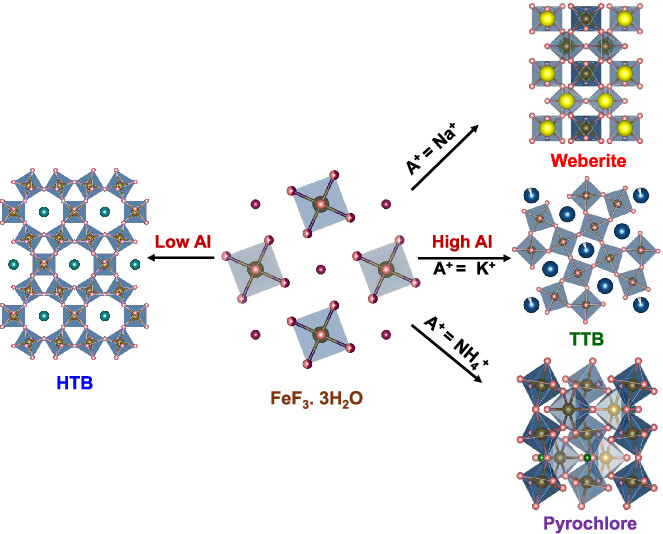Abstract
Topochemical reactions are powerful pathways to modify inorganic extended structures, but the present approaches are limited by the degrees of freedom to tune the structural connectivity and dimensionality. In this work, we unveil a new topochemical bottom-up approach to tailor three-dimensional (3D) iron fluoride frameworks from the same one-dimensional (1D) FeF3.3H2O (IF) precursor upon reacting with iodide-based reagents (AI; A+ = Na+, K+, and NH4+). To elucidate their formation mechanism, a series of topochemical reactions are performed by varying the concentration of precursors, reaction temperatures, and durations, and their corresponding products are analyzed through X-ray diffraction, nuclear magnetic resonance, and Mössbauer spectroscopy techniques. Although the lower molar ratio of AI:IF (≈0.25:1.0) produces the same hexagonal tungsten bronze (HTB)−type AxFeF3, the topochemical reactions with higher AI:IF ratios yield weberite-Na1.95Fe2F7, tetragonal tungsten bronze (TTB)-K0.58FeF3, and pyrochlore-NH4Fe2F6 phases. Our density functional theory calculations attribute the formation of iron fluoride phases to their thermodynamic stability. Moreover, kinetics also play an important role in enabling weberite and HTB fluorides with high purity, while the pyrochlore-NH4Fe2F6 retains a minor HTB-(NH4)xFeF3 impurity. Overall, this work shows a new possibility of modulating the low-dimensional precursor to attain 3D frameworks with different structural arrangements via topochemical approaches.
